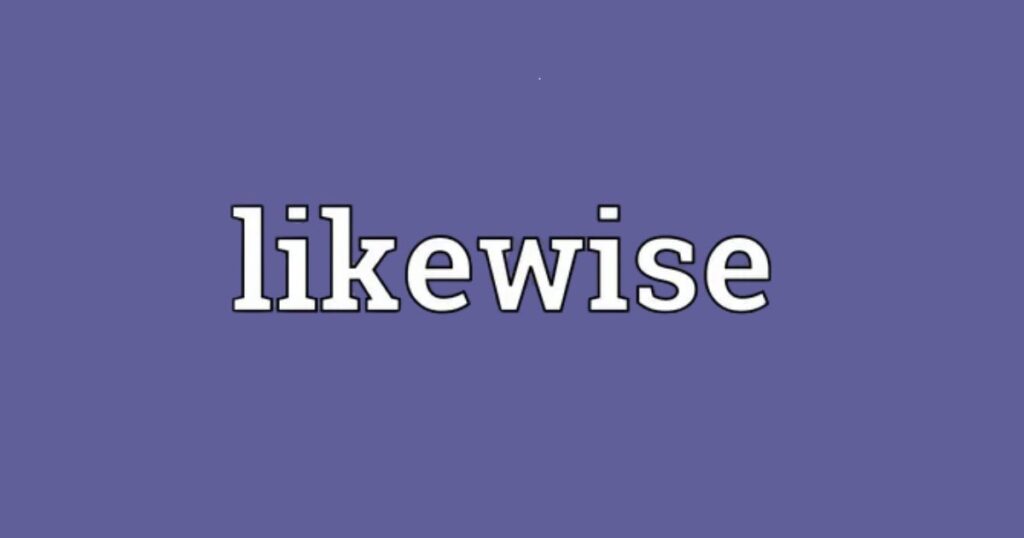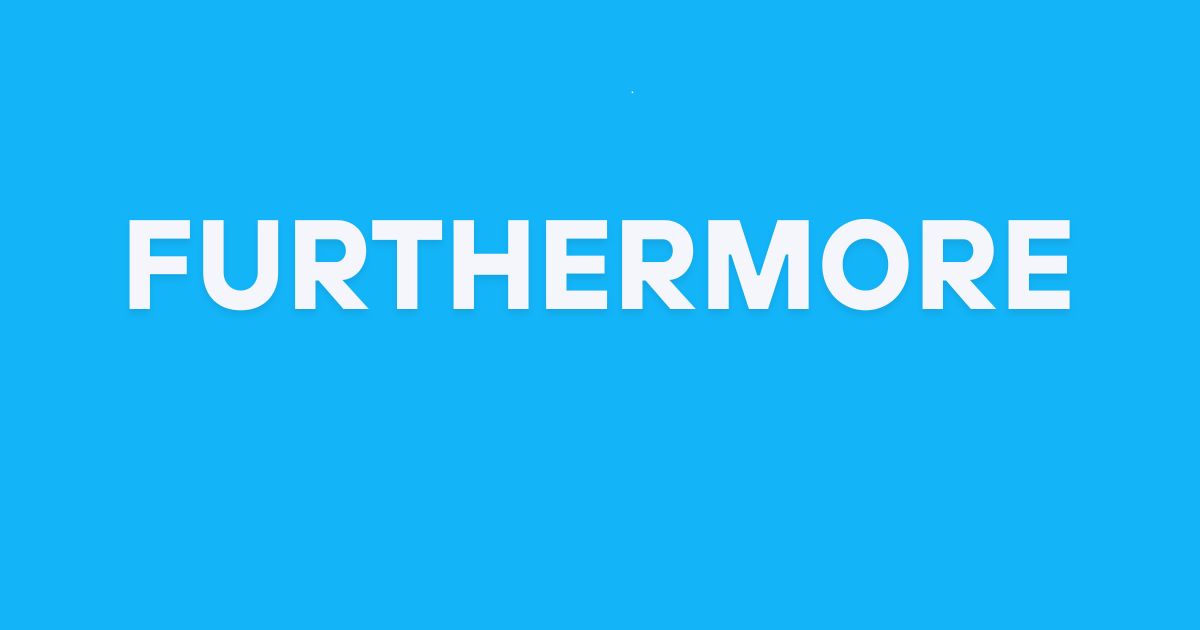Tired of using furthermore in every sentence? You’re not alone. Furthermore is great for adding information, especially in formal writing, but let’s face it, repeating it can make your writing feel dull.
Want your words to sound smoother and smarter? This article gives you better ways to say furthermore. You’ll learn handy alternatives like “moreover,” “also,” and “in addition.” Each comes with a clear meaning, easy example, and when to use it. These words fit essays, emails, speeches, just about anything. Whether you’re writing for school or chatting at work, you’ll find something that fits. Say goodbye to boring repetition. Say hello to a stronger voice. Let’s explore fresh ways to say furthermore, and level up your writing today.
Other Ways to Say “Furthermore”
Looking for other ways to say “furthermore”? Try using words like moreover, in addition, also, or additionally to keep your writing varied and engaging. These alternatives work well in both formal writing and casual discourse, helping you expand on points clearly while maintaining a smooth, natural-sounding flow.
1. Moreover

Example: “The seminar provided valuable insights into modern art. Moreover, it highlighted the evolution of Renaissance art, offering a broader perspective.”
Meaning: “Moreover” signals the introduction of additional information that strengthens or adds weight to the previous statement.
Usage: Best for both formal and casual settings, this word emphasizes the significance of what’s to come.
2. Additionally
Example: “He’s fluent in Spanish. Additionally, he can read and write in French.”
Meaning: “Additionally” introduces supplementary details that further support the previous point.
Usage: Ideal for academic papers, business meetings, or casual discourse, this word helps to expand on ideas effectively.
3. In addition
Example: “She’s a talented musician. In addition, she’s also pursuing a degree in music theory.”
Meaning: “In addition” draws attention to another element or point of significance.
Usage: Widely used in both formal writing and conversational discourse, it adds depth to a statement without overcomplicating it.
4. Also
Example: “He loves reading novels. He also enjoys writing poetry in his free time.”
Meaning: “Also” introduces a related point that adds to the previous statement.
Usage: Simple and direct, “also” is perfect for informal writing and casual conversations.
5. Plus
Example: “The hotel offers free breakfast. Plus, there’s a pool and gym available to guests.”
Meaning: “Plus” conveys the idea of an extra benefit or added value to a preceding point.
Usage: Common in informal settings, it’s a casual way to highlight something additional in a positive light.
6. What’s more
Example: “The workshop was not only informative, but what’s more, it was interactive, allowing for hands-on learning.”
Meaning: “What’s more” emphasizes that the following information is even more important or impactful than what came before.
Usage: Best suited for both written and spoken discourse when you want to underscore the significance of a new point.
7. As well as
Example: “He’s skilled in graphic design as well as video editing, making him a versatile creator.”
Meaning: “As well as” links two equally significant points, suggesting they both contribute equally to the subject.
Usage: Ideal for balancing ideas in both formal and casual settings.
Read More: 12 Other Ways to Say “Bro”
8. On top of that
Example: “She got a promotion last month. On top of that, she’s now leading a major project.”
Meaning: “On top of that” emphasizes an additional point that intensifies or compounds the earlier statement.
Usage: Typically used in informal conversations to highlight something that further amplifies the previous idea.
9. Likewise

Example: “His first book was a best-seller. Likewise, his most recent publication is receiving widespread acclaim.”
Meaning: “Likewise” is used to indicate a continuation of the same trend or sentiment expressed earlier.
Usage: Found in both formal and casual writing, it connects ideas that are similar in nature.
10. Then again
Example: “The seminar provided great insights into the industry. Then again, the workshops were equally valuable.”
Meaning: “Then again” introduces a point that contrasts or balances the previous statement, while still acknowledging its validity.
Usage: Best for adding nuance or contrast, this phrase works well in informal writing and spoken discourse.
11. And
Example: “She loves playing the piano and teaching music theory to young students.”
Meaning: “And” connects related thoughts or ideas to show they belong together.
Usage: Universally applicable, “and” is essential in both formal and casual writing and speech.
12. Not to mention
Example: “The museum boasts an extensive collection of Renaissance art, not to mention the impressive modernist pieces it holds.”
Meaning: “Not to mention” subtly introduces a point that may be implied but still deserves emphasis.
Usage: Ideal for informal discourse or when emphasizing something obvious yet noteworthy.
Conclusion
Now you know many ways to say furthermore. These words help your writing flow better. You don’t have to repeat furthermore every time. Try “also,” “moreover,” or “in addition.” They all add meaning in a smooth way. Plus, they work in both formal and casual writing.
Furthermore, using new words keeps your writing fresh. It makes your message stronger. What’s more, it shows your skill. Additionally, readers stay interested. As well as sounding smart, these words feel natural. Not to mention, they’re easy to use. On top of that, they improve your tone. So next time, don’t just use furthermore. Try something new, and let your words shine.
FAQ’s
What does the word furthermore mean?
Furthermore is used to add more information. It connects ideas in a formal and clear way in writing or speech.
Why should I use other words instead of furthermore?
Using different words for furthermore keeps your writing interesting. It helps avoid sounding repetitive or dull.
Can I use alternatives to furthermore in casual writing?
Yes, many words like also and plus work well as furthermore alternatives in casual writing and friendly conversations.
Are there simple words that mean the same as furthermore?
Yes, easy words like also, and, and in addition can replace furthermore in both casual and formal writing.
When is it best to use the word furthermore?
Use furthermore in essays, reports, or speeches when you want to add important information and sound formal.

Grammerroot is your trusted source for mastering English grammar and language skills. From simple rules to advanced tips, we help learners build strong foundations through easy-to-understand content. Learn smart, learn right — only at Grammer Root.




